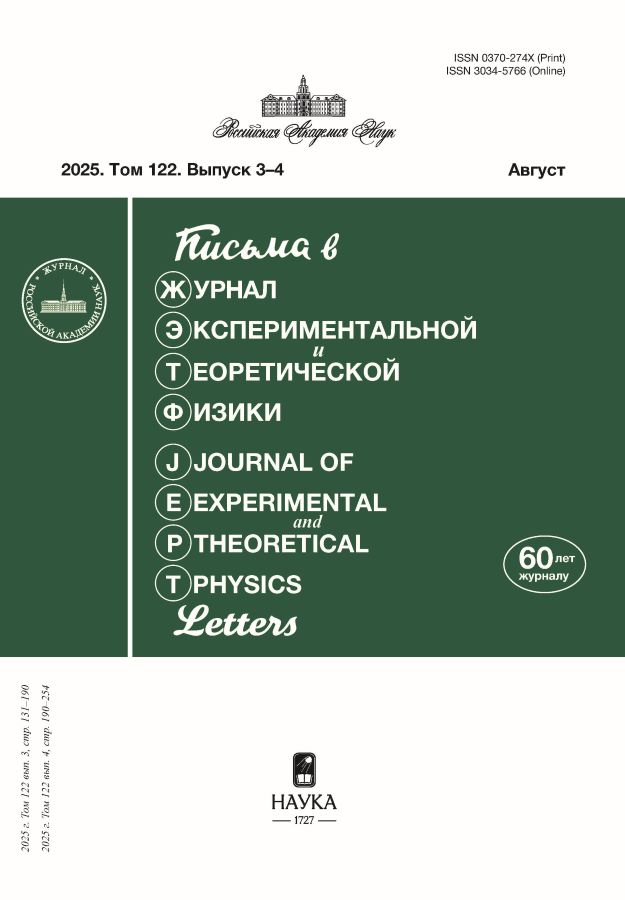Intrachain Distances in a Crumpled Polymer with Random Loops
- Authors: Slavov B.1, Polovnikov K.1
-
Affiliations:
- Skolkovo Institute of Science and Technology
- Issue: Vol 118, No 3-4 (8) (2023)
- Pages: 204-211
- Section: Articles
- URL: https://kld-journal.fedlab.ru/0370-274X/article/view/663126
- DOI: https://doi.org/10.31857/S1234567823150107
- EDN: https://elibrary.ru/HYFTLK
- ID: 663126
Cite item
Abstract
Crumpled polymer further folded into random loops has been proposed as a minimal model of chromosome organization. How do loops affect spatial distances in such a polymer? Here we investigate the statistics of intrachain distances,
About the authors
B. Slavov
Skolkovo Institute of Science and Technology
Email: skfoundation@sk.ru
121205, Moscow, Russia
K. Polovnikov
Skolkovo Institute of Science and Technology
Author for correspondence.
Email: kipolovnikov@gmail.com
121205, Moscow, Russia
References
- K. Polovnikov and B. Slavov, Phys. Rev. E 107, 054135 (2023).
- K. Polovnikov, B. Slavov, S. Belan, M. Imakaev, H.B. Brand?ao, and L.A. Mirny, bioRxiv (2023).
- L. Mirny and I. Solovei, Nat. Rev. Mol. Cell Biol. 22, 439 (2021).
- E. J. Banigan and L. Mirny, Curr. Opin. Cell Biol. 64, 124 (2020).
- G. Fudenberg, N. Abdennur, M. Imakaev, A. Goloborodko, and L. Mirny, Harbor symposia on quantitative biology 82, 45 (2017).
- T. Terakawa, S. Bisht, J.M. Eeftens, C. Dekker, C.H. Haering, and E.C. Greene, Science 358, 672 (2017).
- M. Ganji, I.A. Shaltiel, S. Bisht, E. Kim, A. Kalichava, C.H. Haering, and C. Dekker, Science 360, 102 (2018).
- E. Orlandini, D. Marenduzzo, and D. Michieletto, Proceedings of the National Academy of Sciences 116, 8149 (2019).
- A. Goloborodko, J. F. Marko, and L.A. Mirny, Biophys. J. 110, 2162 (2016).
- E. Hildebrand, K. Polovnikov, B. Dekker, Y. Liu, D. Lafontaine, A. Fox, Y. Li, S. Venev, L. Mirny, and J. Dekker, bioRxiv (2022).
- J. Dixon, S. Selvaraj, F. Yue, A. Kim, Y. Li, Y. Shen, M. Hu, J. Liu, and B. Ren, Nature 485, 376 (2012).
- C. Arnould, V. Rocher, A.-L. Finoux, T. Clouaire, K. Li, F. Zhou, P. Caron, P. Mangeot, E. Ricci, R. Mourad, J. Haber, D. Noordermeer, and G. Legube, Nature 590, 660 (2021).
- A. Piazza, H. Bordelet, A. Dumont, A. Thierry, J. Savocco, F. Girard, and R. Koszul, Nat. Cell. Biol. 23, 1176 (2021).
- S. Brahmachari and J. Marko, Proceedings of the National Academy of Sciences 116, 24956 (2019).
- A. Grosberg, S. Nechaev, and E. Shakhnovich, Journal de physique 49, 2095 (1988).
- L. Mirny, Chromosome Res. 19, 37 (2011).
- A. Grosberg, Y. Rabin, S. Havlin, and A. Neer, Europhysics Letters 23, 373 (1993).
- T. Hsieh, C. Cattoglio, E. Slobodyanyuk, A. S. Hansen, X. Darzacq, and R. Tjian, BioRxiv (2021).
- S. Rao, S.-C. Huang, B.-G. St Hilaire et al. (Collaboration), Cell 171, 305 (2017).
- C. M¨unkel, R. Eils, S. Dietzel, D. Zink, C. Mehring, G. Wedemann, T. Cremer, and J. Langowski, J. Mol. Biol. 285, 1053 (1999).
- R.K. Sachs, G. Van Den Engh, B. Trask, H. Yokota, and J.E. Hearst, Academy of Sciences 92, 2710 (1995).
- M. Bohn and D. Heermann, Phys. Rev. E 76, 051805 (2007).
- O. Shukron and D. Holcman, Phys. Rev. E 96, 021503 (2017).
- J. Mateos-Langerak, W. Bohn, M. de Leeuw, O. Giromus, E. Manders, P. Verschure, M. Indemans, H. Gierman, D. Heermann, R. van Driel, and S. Goetze, PNAS 106, 3812 (2009).
- S. A. Belan and D.E. Starkov, JETP Lett. 115, 763 (2022).
- S. Belan and V. Parfenyev, arXiv:2301.03856 (2023).
- A.Y. Grosberg and A.R. Khokhlov, Statistical Mechanics of Macromolecules, AIP, Woodbury, NY. (1994), p. 350.
- K. Polovnikov, S. Nechaev, and M.V. Tamm, Soft Matter 14, 6561 (2018).
- K. Polovnikov, M. Gherardi, M. Cosentino-Lagomarsino, and M. Tamm, Phys. Rev. Lett. 120, 088101 (2018).
- K. Polovnikov, S. Nechaev, and M.V. Tamm, Phys. Rev. E 99, 032501 (2019).
- B. Bintu, L. Mateo, J.-H. Su, N. Sinnott-Armstrong, M. Parker, S. Kinrot, K. Yamaya, A. Boettiger, and X. Zhuang, Science 362, eaau1783 (2018).
- B. Mandelbrot and J. Van Ness, SIAM review 10, 422 (1968).
- A. Grosberg, Soft Matter 10, 560 (2014).
Supplementary files











